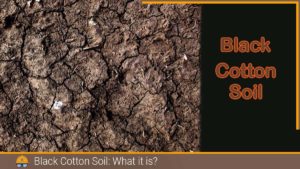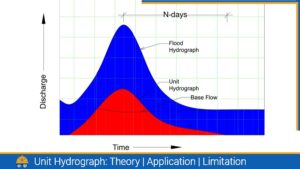What is Water Demand?
Water demand refers to the amount of water that a particular user or group of users requires for various purposes such as drinking, washing, irrigation, and industrial processes. It is usually measured in volume (such as gallons or litres) and is influenced by many factors such as population growth, weather patterns, land-use change, and economic activity.
Water requirements can be divided into two main categories: consumptive and non-consumptive. Consumptive water demand refers to water that is used and not returned to the source, such as water used for irrigation or industrial. Whereas, non-consumptive water demand refers to water that is used but returned to the source. Water used for drinking or washing is an example of non-consumptive water demand.
When designing a water supply system, one must not only determine the total annual water flow but also evaluate the average flows (or draft rates) required and the variability of these flows. Therefore, the following variables are generally evaluated and recorded:
- Total annual volume (V) in litres or million litres.
- The annual average rate of the draft in litres per day, i.e. V/365.
- The annual average rate of the draft in litres per day per person (i.e. litres per capita per day or lpcd), called per capital demand (q).
- Fluctuations in flows expressed in terms of percentage ratios of maximum or minimum yearly, monthly, daily or hourly rates to their corresponding average values.
- The average rate of the draft in litres per day per service, i.e.
it is very difficult to precisely assess the quantity of water demand by the public since there are many variable factors affecting water consumption. Certain thumb rules and empirical formulas are, therefore, generally used to assess this quantity, which may give fairly accurate results. The use of a particular method of a formula for a particular case has, therefore, to be decided by the intelligence and foresightedness of the designer. The various types of water demands, that a city may have, may be broken down into the following classes:
Also read: Water Quality Parameters: Importance of Quality of Water?
Type of Water Demand
Due to the many factors that influence water use, it is very difficult to accurately estimate the amount of water that the general public will need. Therefore, certain rules of thumb and empirical formulas are commonly used to determine this size and yield fairly accurate results. Therefore, the use of a particular method of expression in a particular case must be determined by the intelligence and foresight of the designer. The different types of water demand a city may have can be categorized into the following classes:
- Domestic water demand
- Industrial
- Institution and commercial
- Demand for public water
- Fire demand
- Water is required to compensate for losses in waste and thefts
Domestic Water Demand
This includes water used domestically for drinking, cooking, bathing, lawn watering, gardening, sanitary purposes, etc. Per capita, domestic water consumption depends on the living conditions of consumption. According to IS 1172-1993, a minimum domestic consumption of 135 l/h/d (litres per person per day)for a town or city with a complete flushing system should be assumed.
The total domestic water demand consumption usually amounts to 50 – 60% of the total water consumption.
Industrial Water Demand
The amount depends on the number and type of industries present in the city. The ordinary per capita consumption due to the industrial needs of the city is generally assumed to be 50 l/p/d (litres/person/day).
Institutional and Commercial Water Demand
The water requirements of institutions, such as hospitals, hotels, restaurants, schools and colleges, railway stations, offices, factories, etc. should also be assessed and provided above. The quantity will certainly vary with the nature of the city and with the number and commercial establishments and institutions present in it. On average, a per capita demand of 20l/h/d is usually considered to meet commercial and institutional water demand. This demand may be as high as 50 l/h/d for highly commercialised cities.
Also read: Different Methods of Water Distribution: System of Water Supply
Demand For Public Water/Recreational
This includes the quantity of water requirement for public utility purposes, such as watering public parks, and public toilets, gardening, washing and sprinkling on roads, using public fountains, etc. The per capita consumption for public use can be taken as 10 l/h/d.
Fire Demand
The quantity of water required for extinguishing first should be easily available and stored in storage reservoirs. Fire hydrants are placed about 100 to 150 meters apart.
Waste and Thefts
This consumption accounts for 55 l/h/d. Even if the waterworks are managed with high proficiency, a loss of 15% of total water consumption is expected.
Also read: Per Capita Demand of Water | Factor Affecting Per Capita Demand
FAQs:
Q: What factors influence water demand?
A: Water demand is influenced by a range of factors, including population growth, climate and weather patterns, changes in land use, economic activity, and water pricing and policies.
Q: What is the difference between consumptive and non-consumptive water demand?
A: Consumptive water demand refers to water that is used and not returned to the source, while non-consumptive water demand refers to water that is used but returned to the source. Examples of consumptive water use include irrigation and industrial processes, while non-consumptive uses include drinking water and washing.
Q: Why is it important to manage water demand?
A: Managing water demand is important to ensure that there is enough water available to meet the needs of all users, while also protecting the environment and ensuring the long-term sustainability of water resources. Efficient water use can also help to reduce costs for water utilities and users.
Q: What are the different types of water demand?
There are several different types of water demand, including:
1. Domestic water demand: This is for households, including drinking water, and water for cooking, cleaning, and bathing.
2. Industrial water demand: This is for industrial processes, such as manufacturing, mining, and power generation.
3. Agricultural water demand: This is for irrigation, livestock watering, and other agricultural uses.
4. Commercial water demand: This is for commercial establishments, such as restaurants, hotels, and office buildings.
5. Fire-fighting water demand: This is for firefighting purposes, including fire hydrants and sprinkler systems.
6. Institutional water demand: This is for public institutions such as schools, hospitals, and government buildings.
7. Recreational water demand: This is for recreational activities, such as swimming pools, fountains, and water parks.
![]()







